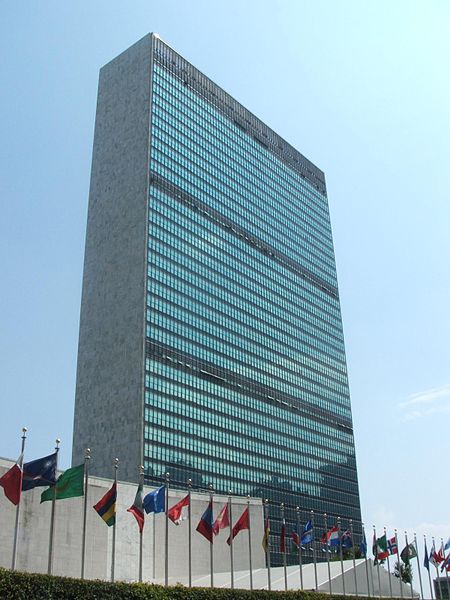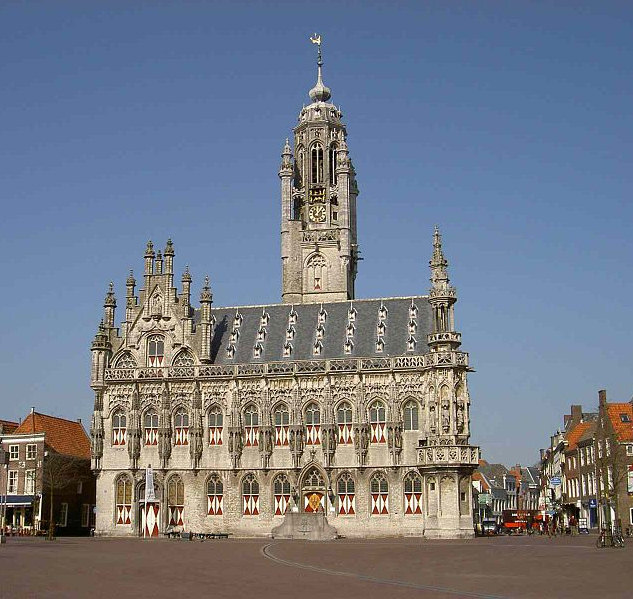The United Nations Organization (U.N.O.) is the keystone of the contemporary world. Thus, the buildings designed to house it should, by the majesty of their lines and proportions, express the high function for which they are destined.
Our photo shows the U.N. administration building. Despite its enormous dimensions, we would hesitate to call it a palace. It is certainly immense, most expensive and overwhelming, but its lines are as commonplace as those of a matchbox; they are monotonous, plain, harsh―like those of a penitentiary. And its air is somber, like that of a KGB headquarters. Everything about this immense framework of concrete, steel and glass seems calculated to make man feel like nothing more than an ant, a grain of sand, an atom.
* * *
Middelburg is a small village in Holland that built its town hall in the fifteenth century. How can this building compare in size with that of the U.N.? Yet we would not hesitate to call it a palace because the nobility of its lines does not allow one to give it any other name.
A mere difference in architectural style? It is said in literature that “the style is the man.” Regarding architecture, it could be said that the style is the epoch. Every style is a result of an ensemble of tendencies, ideas, aspirations and mental attitudes.
More shocking than the contrast between the two styles is the contrast between these two mentalities, two epochs, two cultures―one Christian and the other neo-pagan.
Ambience Customs & Civilization, No. 7 – July 1951













